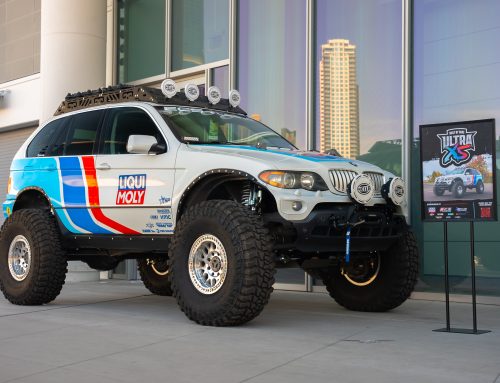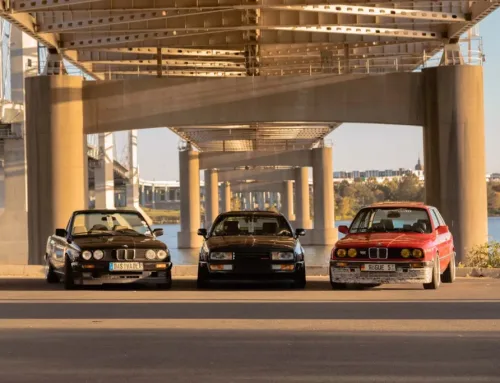As the world becomes a smaller and smaller place thanks to social media and the ability to instantly connect with anyone anywhere, the lines between cultures are blurred. When the drift car craze hit American shores in the late 90’s, there was a clear distinction between JDM styling, domestic muscle, and the refined German sports-luxury vehicles. Not all JDM cars were acceptable platforms for modification, so only some gained the exponential growth in popularity and subsequent increases in values as the demand grew. Fast-forward to a few years ago, we see the prices for early 90’s JDM rear-wheel-drive, manual transmission, drift cars hitting all-time highs. The cost for a used S13 tripled around 2015, which spurned a wonderful shift in the culture around drift cars. Less popular models like larger luxury sedans and European alternatives became more affordable in comparison, so drift builds began to incorporate unorthodox vehicles. Not all are created equally, however. If you are a European enthusiast, your options for drift builds are as endless as your imagination, but one stands out as a clear victor: the E39 5-series is the ideal drift car, and we are going to explain why.

First, the drivetrain layout. The E39 is a rear-wheel-drive, straight six or V8 powered, mid-sized sedan. The engineers at BMW made it a point to maintain a near 50/50 weight distribution for which their cars were famous, and the new 5-series for the 1990’s was no different. Produced until 2004, the E39 exhibited many tech features that made it a comfortable business sedan, but it also held true to its performance roots. Their sportiness plays a huge part in the drift build since it makes for less work off the bat and less downtime before you get sideways.
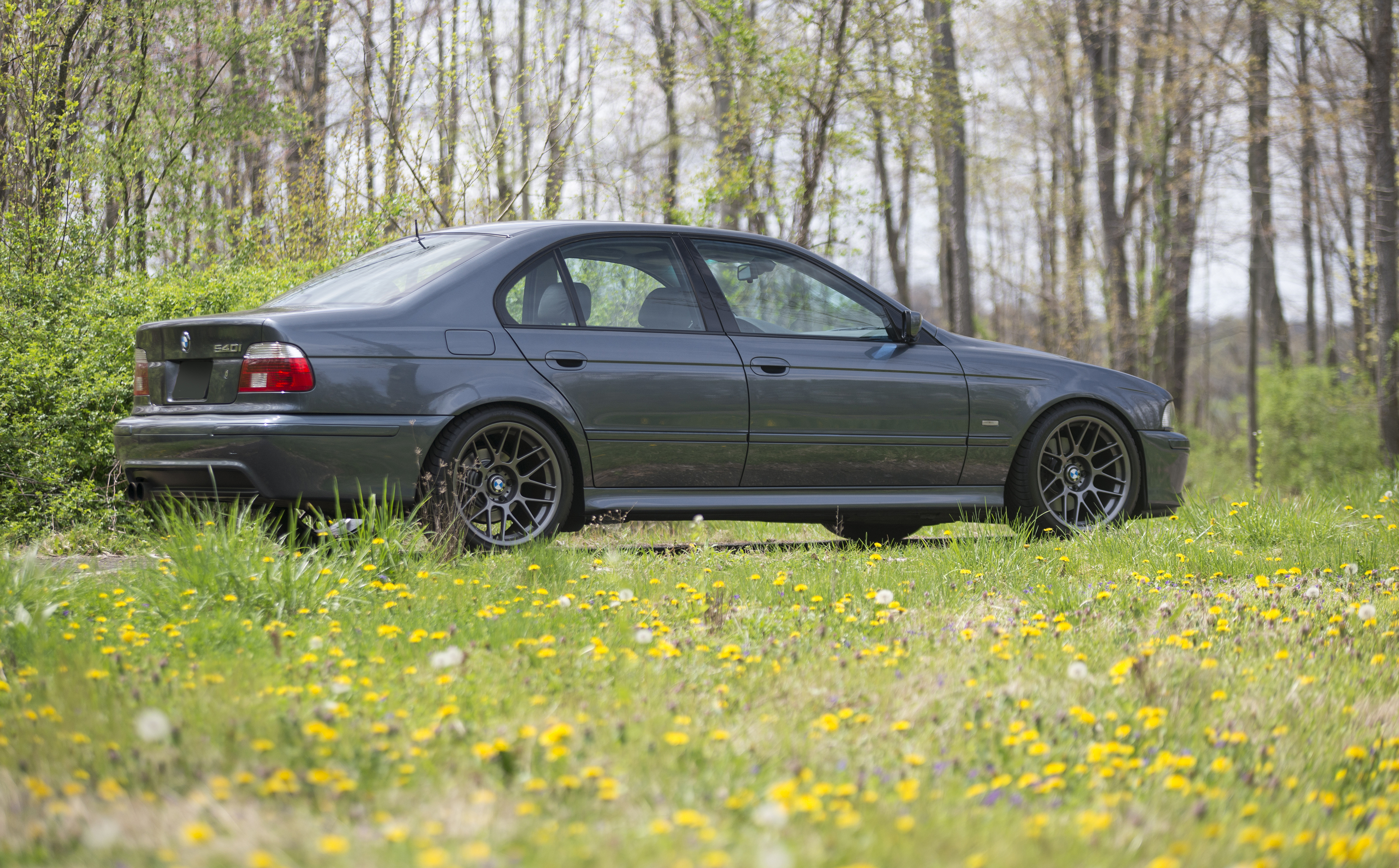
The FR (front engine, RWD) layout is a must for any drift car, but almost equally important is the wheelbase. Too short of a wheelbase makes drifting increasingly difficult. Cars like E30s, Miatas, AE86s, and other shorter-wheelbase coupes are often go-to answers for ‘what drift car should I start with’, but they have a snappier feel and can be more challenging to sustain a drift or transition smoothly, especially on larger tracks. For someone looking for an all-purpose drift car and daily, the E39 offers a longer wheelbase which means skids are incredibly controllable. The downside is you need power to initiate the drift, but the E39 has no shortage of power. To provide a comparison, a popular JDM drift car platform is the Lexus GS 430 sedan, which has a wheelbase of 110”. The E39 is a 111.4” wheelbase and the same drivetrain layout, but with better chassis balance front to rear and arguably is a more rigid car. You can already see that there may be some merit to the claim. If you are looking at a Lexus or Toyota big body, a BMW E39 is an alternative you should consider.
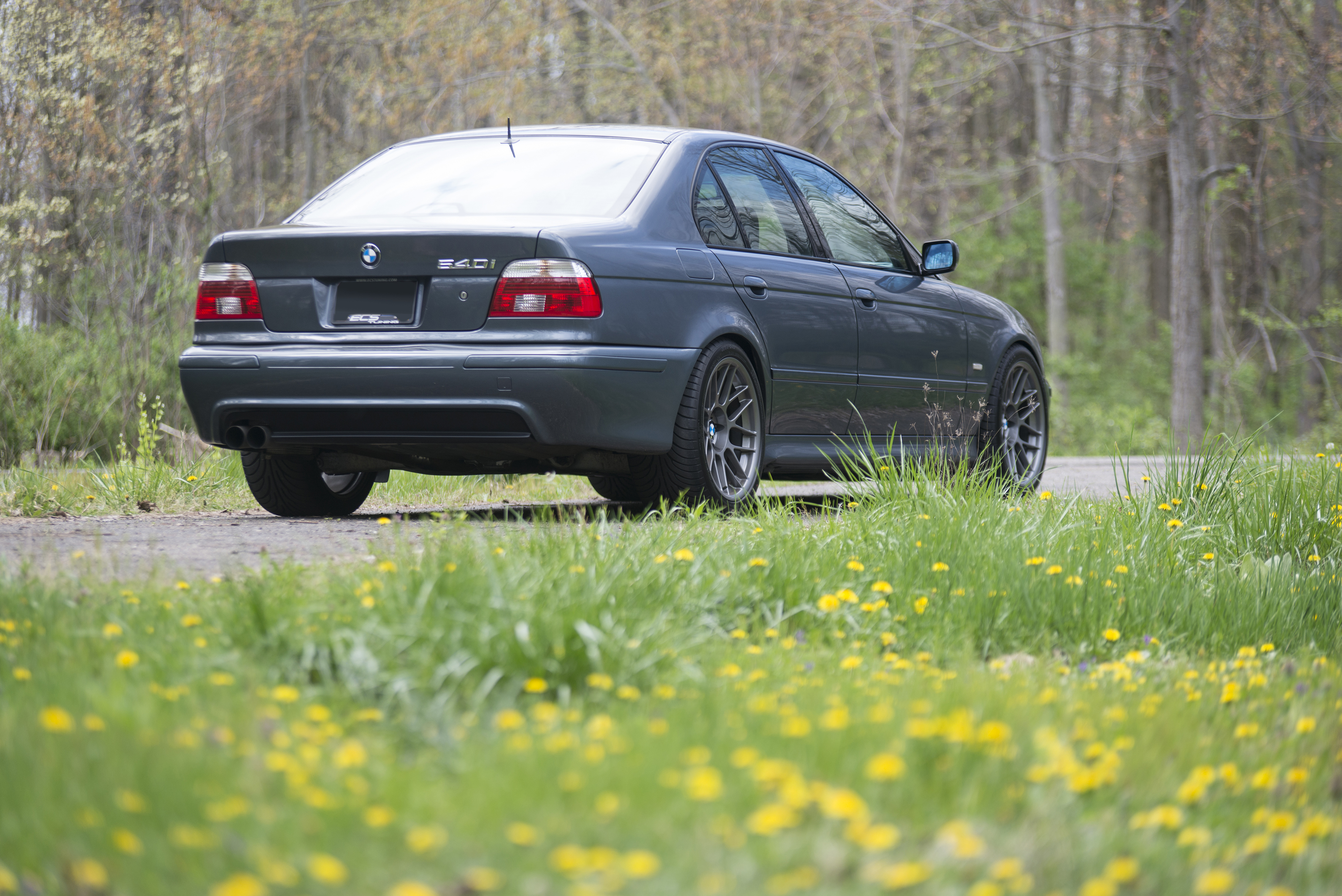
Moving on, the E39 sported a multi-link front suspension and a rack-and-pinion steering box. This makes pulling more angle from your steering quite easy. Additionally, the E39 steering rack can easily be swapped for a tighter ratio rack from a sportier BMW. Popular modifications common to purpose-built drift cars to achieve more angle, no suspension or drivetrain deflection, and tighter steering are now widely available for BMWs.
The swap between other OEM parts is another benefit for those who are steadily joining me in ‘Camp E39’. BMWs are fantastic platforms to customize in the spirit of OE Plus modifications since so many performance parts were offered from BMW that interchange across models. Bigger brakes, more aggressive wheels, stiffer suspension, performance exhaust, and various engine components can all be sourced from BMWs on which they were originally equipped to make your E39 a competent drift car without forking over the contents of your piggy bank or hunting an aftermarket option down that may have questionable quality.
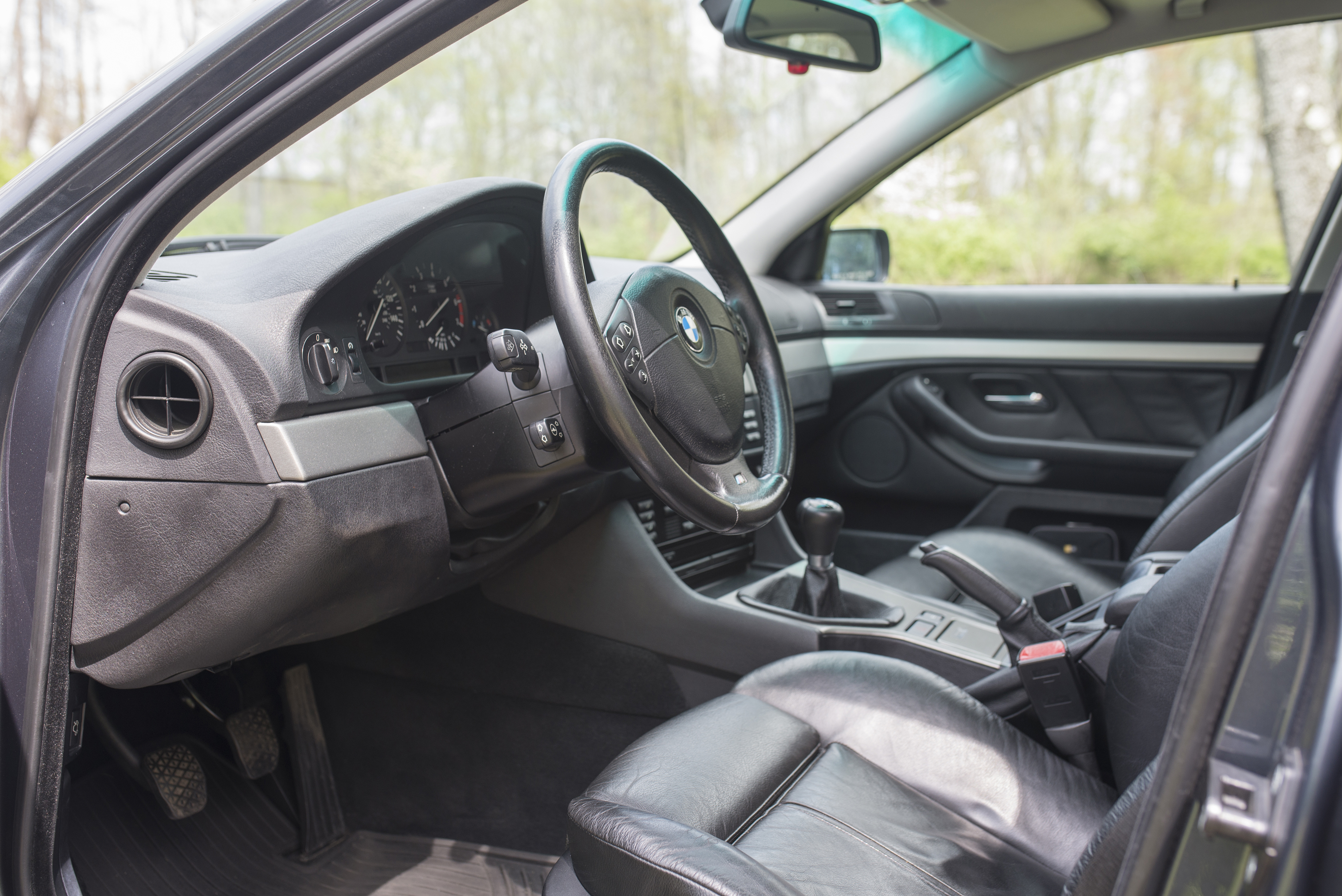
Maintaining the theme of parts compatibility, the E39 came with one of five engines. A 525i sported the M54B25TU, a VANOS equipped, OBDII, 2.5 liter straight six. These are incredibly popular engines and can be found in 5 series and 3 series cars quite readily. Next, the 528i had a slightly larger version of the straight six denoted the M52B28. These are equally easy to maintain and share almost all parts across all BMW straight six engines of the time. The 530i had the biggest straight six, the M54B30. These are essentially de-tuned E36 M3 engines and the most desirable to have for a drift E39, in my opinion. Lastly, the M62/S62 engines found in the 540i and M5 respectably were the big V8s BMW equipped their top-of-the-range 5 series cars in the day. The M5 is still incredibly pricey, but the 540i offers a close second choice at a much more reasonable cost. The V8 is a high-revving engine that behaves more like a straight six than a traditional V8 in the power delivery. These can provide tons of power and fun if yours is well sorted and maintained. To speak to compatibility, all these engines can be found in 3-series or 7-series cars and are quite cheap.
Sticking with the engine topic, drift cars rarely keep their engines stock. The engine range found in E39s are popular for modification and can be upgraded for minimal costs. Aggressive camshafts, a tune, performance exhaust, and basic maintenance is all it takes to squeeze more power from the 6 or 8 cylinder engines. If you want to take it to the next level, the M5x family of straight sixes absolutely love boost. A turbo setup on one of these engines can cost upwards of $2,000 but can be achieved for as little as about $800 if you are thrifty. This creates a whole new element of driving your E39. While you do not need more power to learn, the E39 will most likely become tame and boring as you progress. Having the ability to slap a turbo on the M5x can keep your E39 relevant as you improve. Buying a turbo setup is much cheaper than building a new engine or switching cars, after all.
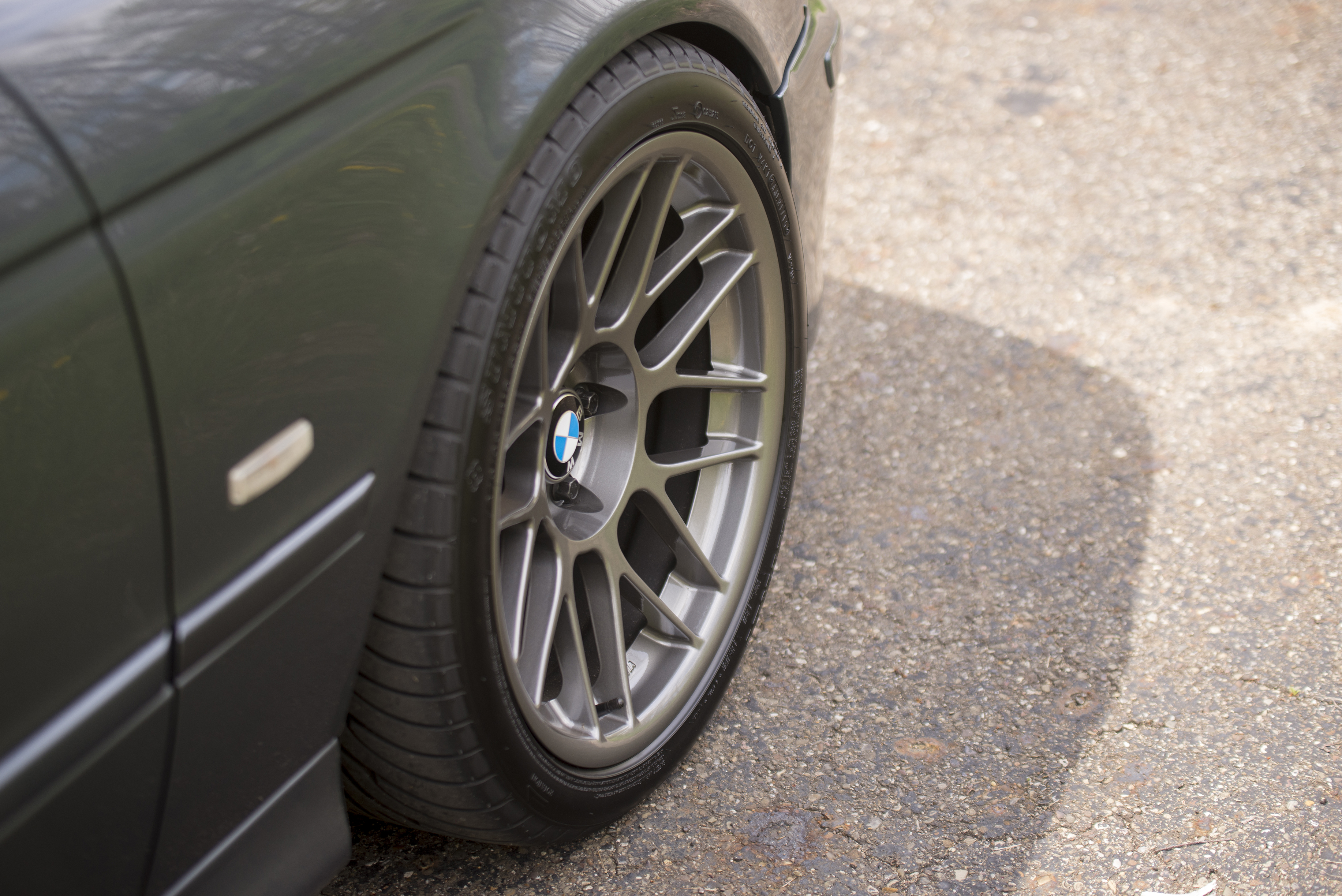
Suspension, once again, is a big part of making a drift car slide easily without rolling over like a dog. Tons of suspension options ranging from ‘cup kits’ to full coilovers give you no shortage of choices in determining your suspension setup. A set of inexpensive coilovers with adjustable camber, dampening, and ride height is ideal in order to reduce wheel travel and increase the rigidity of your suspension.
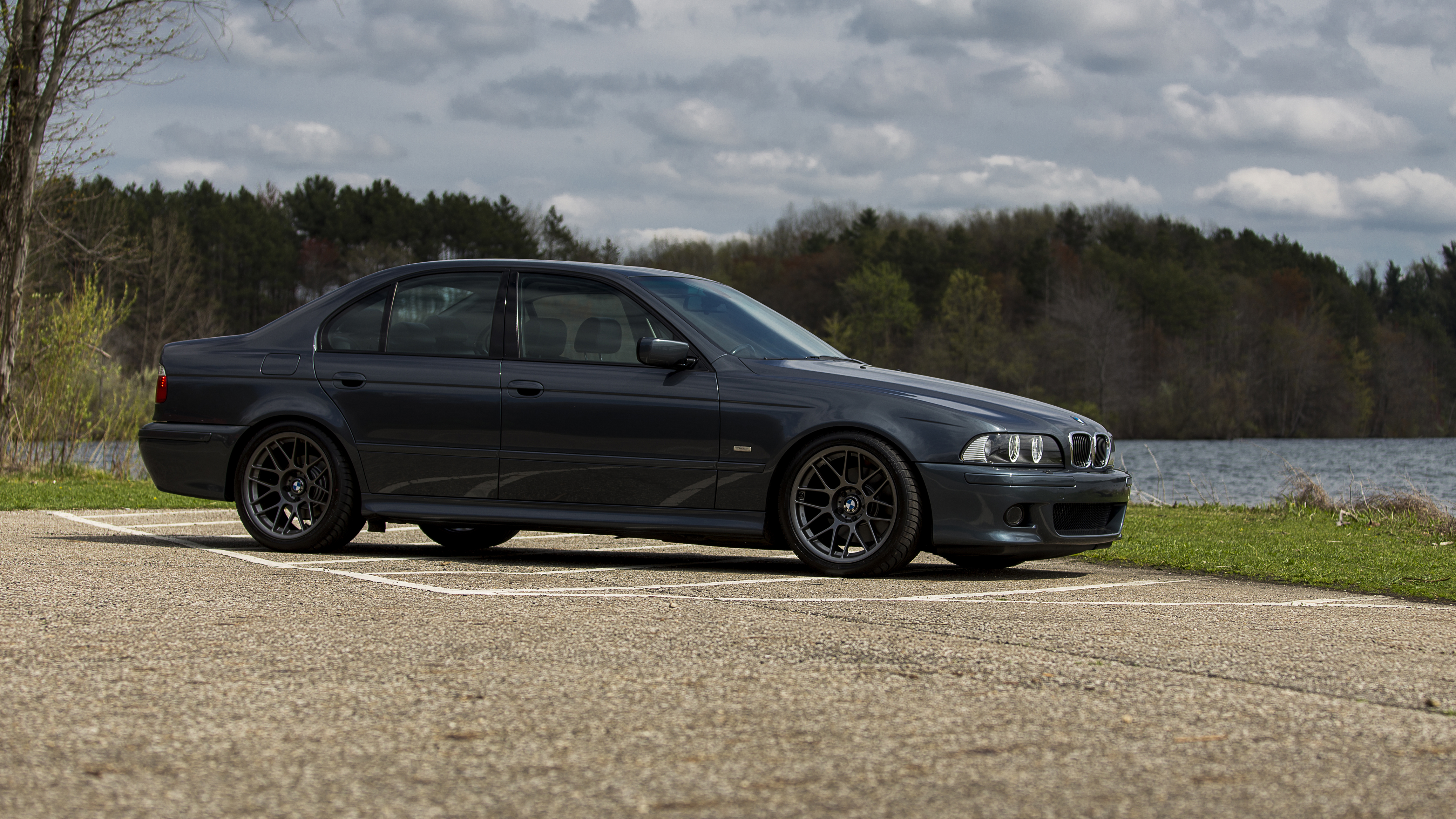
E-brakes are critical for beginners. The standard E-brake in any car is not designed to be ripped around for line correction, so upgrading these are pretty much required for any platform. Fortunately, dual caliper setups in E39s are nothing out of the ordinary and they are easily acquired or fabricated. The dual caliper setup will allow you to install a hydraulic e-brake and independently lock your rear wheels. Since the E39 can be easily converted for this, we once again see a major benefit in choosing one as your drift car project.
Weight savings are also critical if you are serious about getting sideways. You want as little weight to move around as possible so more power is dedicated to spinning the rear wheels and sliding you around the track. E39 interiors are generally easy to strip. The car was designed to move quite a bit of technology, as we mentioned earlier in the article, so there are tons of non-essential comfort features you can remove and expect quite a performance increase for exactly 0 dollars. The heavy powered front seats come out simply, as do the rear seats. The car has a lot of sound deadening and plush upholstery, so go ahead and ditch all that, too. When you are done, you will have a surprising amount of weight pulled from the car, which translates to better acceleration.
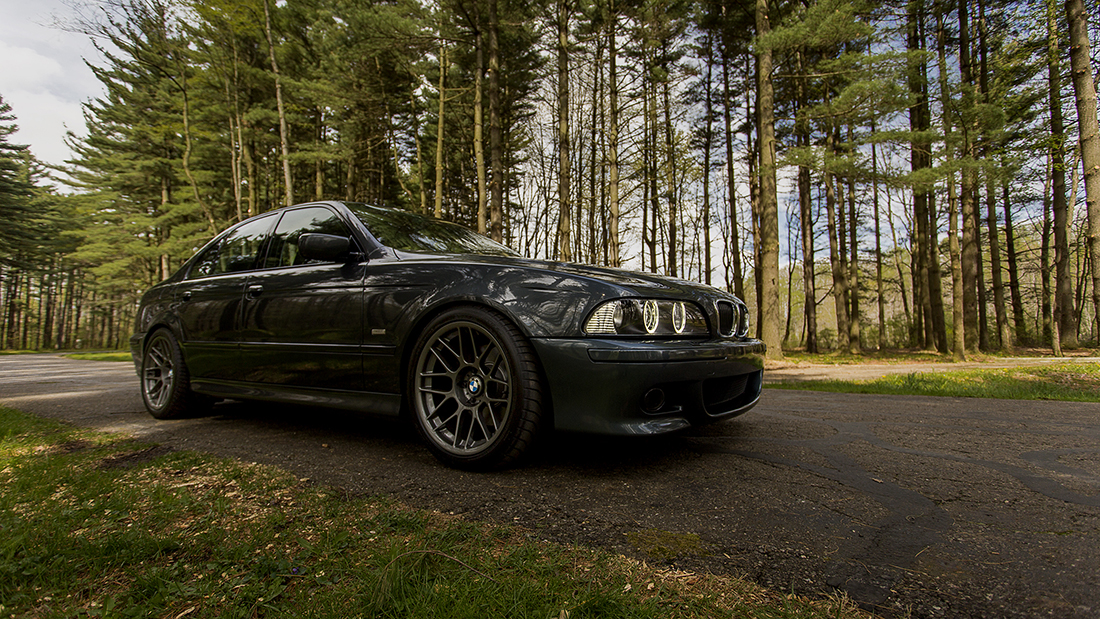
Finally, there is the ‘cool factor’ all drift cars need. This is a mid-size, luxury-performance, BMW sedan. What isn’t cool about it? While everyone out there is rolling around in trashed S13 rust buckets for which they paid double or even triple their actual value, you can experience better quality and cheaper cost of ownership with an E39. The iconic kidneys, understated exterior, and smile-inducing size of the car make whipping one sideways an experience for sure, and damn if they don’t look good doing it.
So let’s summarize with a comparison. For our side-by-sides, let’s look at both a 530i and a 540i. We will stack them against an S13 240sx and a Lexus LS300 respectively due to their overall similarity.
2002 E39 530i –
M54B30 3.0 liter straight six: 230hp/220lb torque
Wheelbase: 111.4”
6-speed manual option or easy to swap
Curb weight: 3,400 lbs give or take
Four doors for more things that rhyme with doors.
Average Used Cost: $3,000 – $6,000
1990 S13 240sx (USDM ONLY)
KA24e or KA24de 2.4-liter I4 – 155hp/160lb torque
Wheelbase: 97.4”
5-speed manual option or easy to swap
Curb weight: 2,700 lbs
2 doors only
Average Used Cost: $5,000 – $10k
When we compare the two, you can see fairly even performance given the power to weight ratios between them, but we have a clear victor. The E39 offers more power, easier parts availability, cheaper purchase prices, cheaper cost of ownership, and more convenience to use if you are restricted to only one car. The E39 530i is clearly the better choice.
2002 540i:
M62B44 4.4 liter V8: 282hp/310lb torque
Wheelbase: 111.4”
5-speed manual option or easy to swap
Curb weight: 3,800 lbs give or take
Four doors for more things that rhyme with doors.
Weight Distribution: 52/48
Average Used Cost: $3,000 – $6,000
Lexus GS430:
1UZ: V8 300hp/325lb torque
Wheelbase: 110”
No 5 speed available, easy to swap
Curb Weight 3,700 lbs
Four doors
Weight Distribution: 53/47
Average Used Cost: $2,000 – $5,000
While the Lexus and BMW here are quite even, the reality is that the BMW is an easier car to get in and drift. Since the manual transmission available in the BMW means you can either get in and go or easily find a trans and pedal assembly to swap, you have a very short amount of downtime, if any, before you have fun behind the wheel. The 540i can be slightly more expensive, but they also can be slightly more desirable. Drift ready GS’ are already becoming increasingly expensive considering what you have to do to make them so. The 540i needs its diff welded and it is ready to slide on the track as-is. Not only that, but the aftermarket community for the BMW is arguably stronger and the resale value is higher. This favors the BMW E39 540i in our book.

As you can easily see, the E39 in any form offers an incredibly valuable combination of attributes that make it the perfect drift sled in lieu of otherwise ‘traditional’ drift cars that now demand a premium thanks to their popularity. With an E39, you are not only a part of the elite BMW driver’s community, but you are also situated in the perfect position to drift a more competent car than everyone else without spending any more money. Rather than hunting for abused used parts, arguing with craigslist posters who “know what they have, no lowballers”, and trying to piece back together a 30-year-old S13 with a million track miles, make the smart choice. Invest in an E39 for the best bang for your buck and quite possibly the next ‘drift tax’ bubble. Right now, few are aware of these cars’ potential in the drifting arena. Be a trendsetter and take advantage of their relative affordability while you can and still be unique with your choice of vehicle without sacrificing performance on the drift course.


